#Ottawa tribe
Text
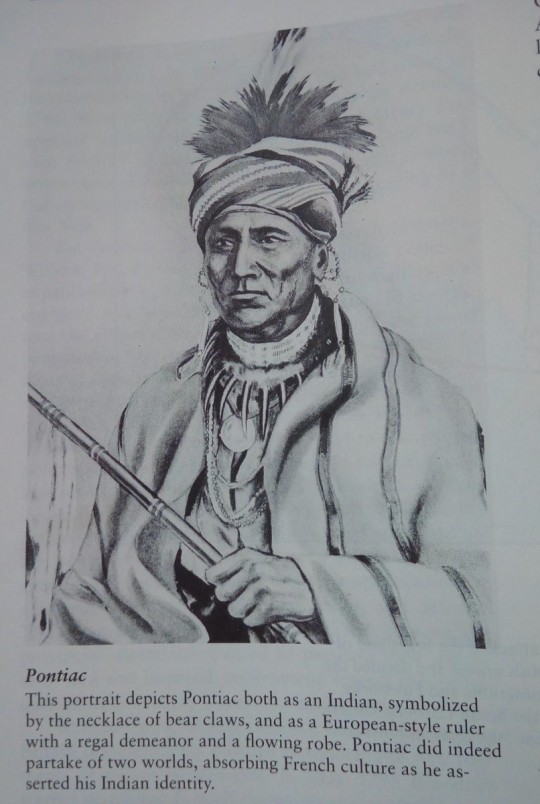
Notes from National Geographic 'Atlas of Indian Nations', p. :
Notable cases of multi-tribal resistance:
The Ottawa chief Pontiac brought more than a dozen tribes together in 1763 and together they burnt down nine of eleven British forts.
Tecumseh was a Shawnee Chief who also brought tribes together to fight the European settlers, but he lost his life in battle.
In the Plains, the Lakota, Cheyenne and Arapho often worked together against American invasion.
The Apache fought alone.
Resistance rarely did anything than buy a little time before the inevitable engulfment of European expansion.
#Pontiac#Ottawa tribe#Native American#European settlers#European colonisation#Tecumseh#Shawnee tribe#Lakota tribe#Apache tribe#Cheyenne tribe#Arapho tribe#tribal resistance
5 notes
·
View notes
Photo

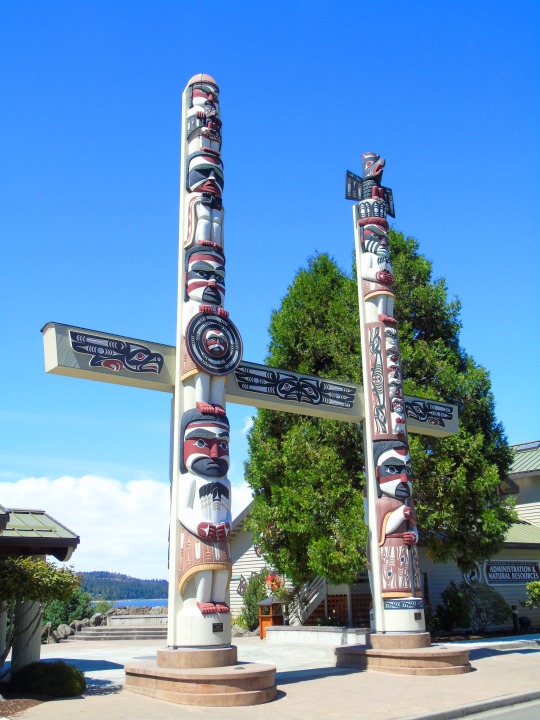


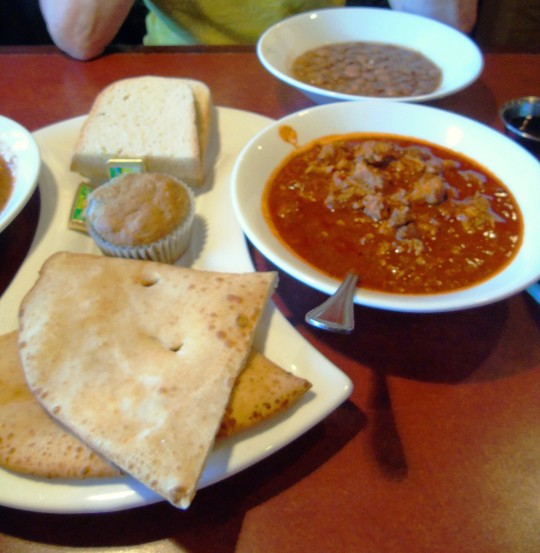


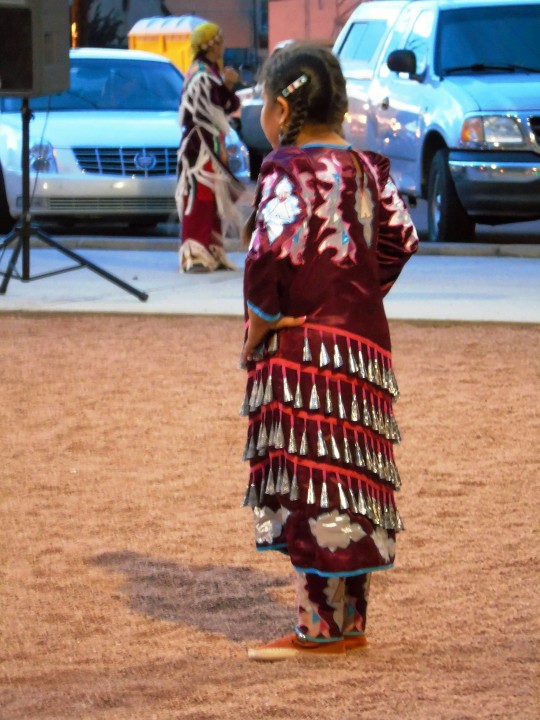


International Day of The World's Indigenous People
The International Day of the World’s Indigenous People on August 9 pays tribute to the indigenous communities of the world. The latest data reveals that there are about 370 to 500 million indigenous people living in 90 countries. These communities are noted to have their own unique set of languages, traditions, cultures, and governing systems. For many indigenous groups, the systems that their ancestors have followed for centuries have stood the test of time by serving them with positive outcomes to date. Many indigenous people’s special bond and connection with nature have also led to the protection of the general environment. However, on the other side, several indigenous communities face difficulties due to a central government’s covert and overt attempts to control their lives. This has led to indigenous people’s rights violations where they would have otherwise ensured peaceful and harmonious lives for them.
History of International Day of The World's Indigenous People
The first International Day of the World’s Indigenous People was officially celebrated in August 1995. The day had been brought into existence when the 49/214 resolution was passed by the U.N. General Assembly on December 23, 1994. August 9 was chosen as the commemorative date because that was when the first meeting of the U.N. Working Group on Indigenous Populations of the Sub-Commission on the Promotion and Protection of Human Rights was held. Every year, the day is honored by governments and organizations holding education forums and conferences to meet and discuss the social issues faced by indigenous groups worldwide. People are also given information on any ongoing and/or upcoming activities and projects that are being undertaken to help the target communities. Every year, the theme changes to shed light on a pressing topic, and the theme for the year 2021 was ‘Leaving no one behind: Indigenous peoples and the call for a new social contract.’
The social contract theme is a call for accountability in the general populations’ interaction with the indigenous communities and their resources. Over the years, many indigenous groups have found themselves to be on a disadvantageous terrain in the face of urban development projects that have destroyed and denigrated their lands and territories. The central governments and builders involved in such projects never sought permission from or even spoke with the indigenous communities before they took the developmental steps. Organizations and agencies like the U.N. and UNESCO have made efforts for constitutional/legislative reforms for dominant indigenous groups. Yet, the efforts must be focussed on bringing everyone together in the cause, leaving none behind.
International Day of The World's Indigenous People timeline
1982 First U.N. Meeting on Indigenous People
The U.N. holds the first meeting on indigenous people by forming the U.N. Working Group on Indigenous Populations of the Sub-Commission on the Promotion and Protection of Human Rights.
1995 International Day of the World’s Indigenous People
The first International Day of the World’s Indigenous People is celebrated by the U.N. General Assembly.
2005 - 2015 Indigenous People’s Decade
The U.N. proclaims 2005 to 2015 to be the ‘Decade of Action and Dignity’ for the indigenous communities.
2019 Indigenous Languages Year
After a startling 2016 report on the danger of more than 2,000 indigenous becoming extinct, the U.N. declares 2019 to be the International Year of Indigenous Languages in order to create awareness.
How To Observe International Day of the World’s Indigenous People
Learn about indigenous groups
Learn an indigenous language
Stand by indigenous groups
History related to indigenous people is always interesting to read and learn about. They have their own sets of beliefs, customs, languages, and cultures. Their daily lifestyles are also often connected with nature, be it animals, trees, certain plants, or lakes/rivers.
The U.N. declared the years 2022 to 2032 the decade for indigenous languages. The goal is to bring to attention the dying languages, since most of them are not taught in schools or are used by the general public. Losing a language is losing an important facet of the history and culture of a people.
The best way to celebrate this day and the rest of the year is by vowing to stand by indigenous groups. The indigenous people have the right to freely choose however they wish to live, much like any other living being on this planet. Protecting their rights also in turn protects your rights in the long run.
5 Interesting Facts About Indigenous People
80% of the world’s biodiversity
4,000 indigenous languages
High poverty rates
Short life spans
Leaders in protecting the environment
Around 80% of the world’s biodiversity is in places where indigenous groups are living.
The 5,000 indigenous communities in the world are credited with having about 4,000 languages.
While the indigenous communities account for only 5% of the world’s population, they make up 15% of the world population that is living in poverty.
Indigenous communities, due to a lack of awareness, have shorter life spans as they die of preventable diseases like malaria and H.I.V.
Studies have shown that the fauna and flora, and biodiversity thrive and flourish where indigenous people reside.
Why International Day of the World’s Indigenous People is Important
It’s a celebration of indigenous people
It’s a celebration of indigenous languages
It’s a celebration of the freedom to live
Indigenous people form an essential and crucial part of not only our planet’s history, but also how human beings have come to make systems to lead fruitful lives. The indigenous people’s cultures, customs, and traditions are interesting to learn about for their uniqueness and for what they teach us about the universe and the bigger picture.
Language, at its core, builds the identity of a people. The involvement of the different phonetics, grammar rules, and formal/informal styles can tell one a lot about where a community has come from, and how their history has shaped them. The same is the case with indigenous languages. The problem lies in their endangerment, and this is why we must strive to preserve them.
The freedom to practice our rights on a piece of land that has shaped our communities for centuries should not be taken away from anyone. The freedom to practice our customs, traditions, and general lifestyles is another important aspect of living a worthwhile life. For these very reasons and many others, we should join indigenous people in their right to live and flourish however they like.
Source
#Wabanki Canoe#International Day of the World’s Indigenous People#USA#9 August#original photography#native american#Washington#Main#travel#vacation#Canada#Founding Fathers by Dale Faulstich#Jamestown S'Klallam Tribe#Anishinaabe Scout by Hamilton MacCarthy#Ottawa#Vancouver#Klahowya Village#Montezuma Castle National Monument#native american food#Navajo#Diné#El Castillo#Chichén Itzá#Mexico#Lower Fort Garry National Historic Site of Canada#The Gather-Ring by Manuel Báez and Charlynne Lafontaine#InternationalDayofTheWorld'sIndigenousPeople
98 notes
·
View notes
Text
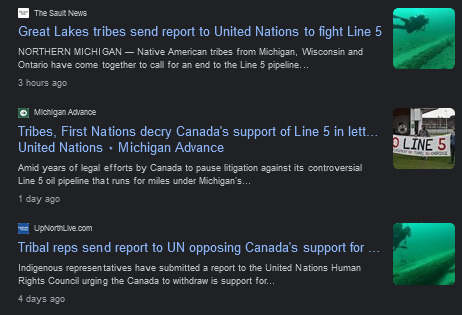
---


Native American tribes from Michigan, Wisconsin and Ontario have come together to call for an end to the Line 5 pipeline.
The Enbridge Line 5 crude oil pipeline, first constructed in 1953, stretches from Wisconsin through 645 miles of Michigan and ends in Sarnia, Ontario. Part of the pipeline travels underwater through the Straits of Mackinac.
In recent years, the pipeline's continued operation has become a source of controversy. Many tribal nations and communities claim that the pipeline goes through their traditional territories. The Straits area in particular is considered a place of significant cultural and historical importance to many native groups, including the Anishinaabe. According to tribal leaders, the pipeline poses a major and direct threat to the ecosystems along its path.
“The Straits of Mackinac are [...] sacred from both a cultural and historical perspective in the formation of the Anishinaabe people,” said Austin Lowes, chairperson of the Sault Ste. Marie Tribe of Chippewa Indians, in a statement. “Protecting the Straits is also a matter of the utmost environmental and economic importance — both to our people and the state of Michigan.”
Tribal leaders and other environmental groups have publicly opposed the pipeline for many years and have called for the pipeline to be shut down.
Supporters of the pipeline point out that it transports 540,000 barrels of light crude oil and natural gas liquids through Line 5 on a daily basis. [...]
In an effort to address safety concerns, Enbridge has proposed an underwater tunnel to house the portion of Line 5 that runs under the Straits of Mackinac. [...] Critics of the tunnel project say no oil should be transported through the Straits at all, as a spill could have a devastating impact on more than 700 miles of Great Lakes shoreline. [...]
Previous attempts to shut down the pipeline have been stopped through various means, mostly the 1977 Transit Pipeline Treaty between Canada and the United States.
The latest attempt saw 51 tribal organizations from Wisconsin, Michigan and Ontario submit a report to the United Nations Human Rights Council. This report, dated April 4, claims that the Government of Canada is violating the human rights of Indigenous peoples through its continuous support for Line 5.
The report was submitted to be considered during Canada's upcoming Universal Periodic Review, conducted by the United Nations. As a United Nations member state, Canada is required to be evaluated for its human rights record on a regular basis.
Canada's Universal Periodic Review will take place this year on Nov. 6-17.
The 51 different tribal organizations that signed the report include: The Anishinabek Nation, which represents 39 First Nations throughout the province of Ontario, Sault Ste. Marie Tribe of Chippewa Indians, Bad River Band of the Lake Superior Tribe of Chippewa Indians, Bay Mills Indian Community, Grand Traverse Band of Ottawa & Chippewa Indians, Hannahville Indian Community, Lac Vieux Desert Band of Lake Superior Chippewa Indians, Little River Band of Ottawa Indians, Little Traverse Bay Bands of Odawa Indians, Match-e-be-nash-she-wish Band of Pottawatomi Indians, Nottawaseppi Huron Band of Potawatomi, Saginaw Chippewa Indian Tribe and Red Cliff Band of Lake Superior Chippewa.
---
Headline and text by: Brendan Wiesner. “Michigan, Wisconsin and Canadian tribes come together to fight Line 5.” Yahoo! News. 8 April 2023. Article originally appeared on The Sault News with the title “Great Lakes tribes send report to United Nations to fight Line 5.” [Some paragraph breaks and contractions added by me.]
Context:
Line 3 brings oil from Alberta to Lake Superior. Then, Line 5 brings the fossil fuel from the Duluth area to the Detroit/Windsor area in Ontario.
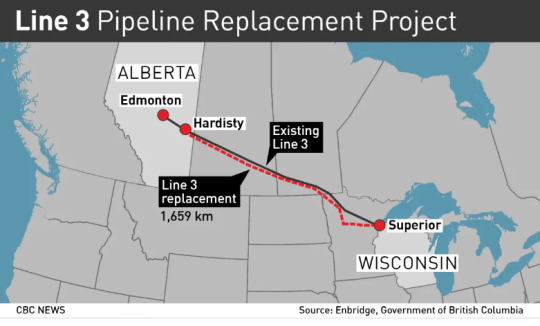
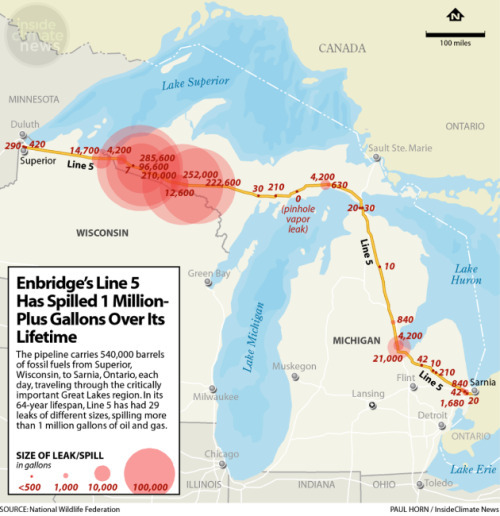
693 notes
·
View notes
Text

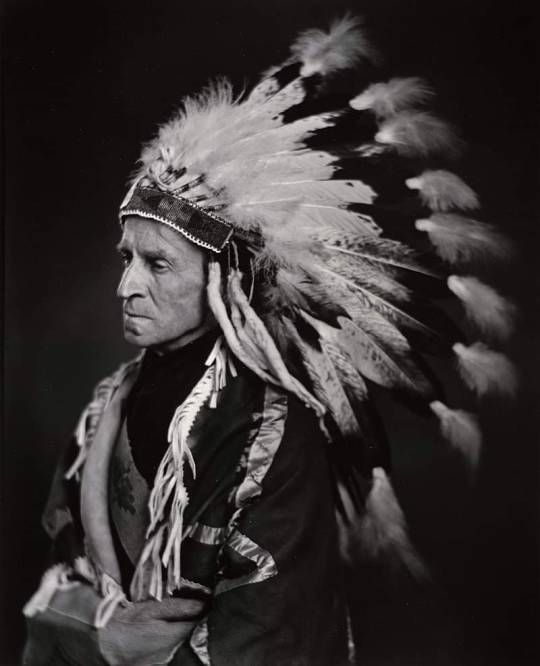

On January 11th 1940 the Author John Buchan died.
Born in Perth, the son of a minister, John Buchan had two careers, first as a politician and secondly as a writer. He studied law at Glasgow and Oxford Universities. He performed well in a government post in South Africa in the aftermath of the Boer War and later became war correspondent for the Times newspaper in the First World War.
He was appointed Governor General of Canada in 1935 and was highly regarded in that role. He became Baron Tweedsmuir in 1936 and died in Ottawa in 1940.
His career as the author of adventure stories began in 1910 with "Prester John" set in Africa and "The Thirty-Nine Steps", set partly in Scotland, appeared in 1915. He published 30 novels as well as biographies of the Marquis of Montrose and Sir Walter Scott.
The pic shows Buchan in a war bonnet used by a chief of the Blood Tribe on the plains of Canada. Chief of the Blood Tribe at this time was Shot-Both-Sides and the bonnet belonged to him.
11 notes
·
View notes
Text
Today we venerate Elevated Ancestor & Saint to many, War Chief Obwandiyag aka Pontiac on the 254th anniversary of his passing 🕊

A true legend among Great Lakes Nations leaders, Chief Obwandiyag is a Chief of Ottawa Nation and is a go-to for matters of justified warfare & diplomacy toward self-liberation. He is the great orator & mastermind who corralled several Great Lakes Nations in a major rebellion against thousands of British colonizers invading Turtle Island in what became known as, "Pontiac's War".
After their victory over the French, British Europeans began to infringe upon Indian-French trade routes & invade their land. This angered the Nations and quelled their contempt. Shortly after earning the title of War Chief, Obwandiyag became the honored head of The Council Of Three [Tribes] (the Ottawa, Potawatomi, & Ojibwa) in 1755. In 1762, he enlisted 18 bands across the Three Tribes (and the nearby Peoples of the Huron Tribe) to attack the British Fort Detriot nearest them (in present day Michigan), thus eliminating the British settlements in their territories by 1763. On May 7th 1963, War Chief Pontiac led an army of 300 warriors armed with weapons sheathed in blankets to lay seige on the fort in an attempt to catch them by surprise. They were met with an army of 120 British soliders braced for attack; their commander had received intel of the impending attack. War Chief Pontiac withdrew his army then returned two days later to lay seige on the fort in which they successfully captured & killed many British colonizers.
While War Chief Pontiac's army grew to 900+ warriors across 6 Tribes to drive the British from their lands, he dispatched messengers to other Tribal bands to attack other British forts & settlements across the region. Over the course of several weeks, they encircled the fort, blocking access to supplies & reinforcements. On July 31st, British troops attempted to break Chief Obwandiyag's hold on the fort at his encampment 2mi east in what became known as, the Battle of Bloody Run. Pontiac had been alerted of the attack & successfully killed 20 British soldiers, wounded 34 more - including a British Caption. This spurred the $200 bounty on War Chief Pontiac's head.
After months of battling back persistent waves of British Troops attempting liberate the fort, Chief Obwandiyag eventually withdrew to Illinois country; where 8 of the 12 British forts had been successfully destroyed. Pontiac continued to encourage resistance to the colonizing invaders over the next year, but suffered a blow when the French eventually began to back the British. In 1764, the British petitioned War Chief Pontiac to end his war.
In July 1766, he agreed to the Peace Treaty in Illinois Country. Though Pontiac's War was at an end, his success & influence drew the ire of some other Indian leaders who began to question the expanse of his authority. Chief Obwandiyag was increasingly ostracized. This led to his assassination by a nephew of Chief Makatchinga, a Peoria of the Illinois Confederation. Unfortunately, this spurred more violence & division between both nations and the eventual loss of their strongholds against their once common enemy.
We remember Chief Obwandiyag as more than a great leader of the Ottawa Nation. He was a titan & a hero who fought relentlessly for this sacred land and it's Indigenous protectors. He's seen the devil in a thousand eyes that met the blade of his ax, and he knows what it takes to unify the hearts of nations to beat as one while combating the legacy of White Supremacy that persists like a thorny weed in our side to this day.
"They came with a Bible and their religion. They stole our land and crushed our spirit, and now tell us we should be thankful to the Lord for being saved." - War Chief Obwandiyag
We pour libations & give Chief Obwandiyag his 💐 today as we honor him for his prowess, leadership, & cleverness that united Nations of Tribes & Bands against colonizing European entities to preserve the sancity of the land we stand on & to protect the Spirits of Earth. May be a beacon for those seeking organized self-defense to continue the fight against the legacy of White Supremacy.
Offering suggestions: tobacco/sweetgrass smoke, libations of water, & Ottawa Nation war drum music
*Note: offering suggestions are just that & strictly for veneration purposes only. Never attempt to conjure up any spirit or entity without proper divination/Mediumship counsel.
#hoodoo#hoodoos#the hoodoo calendar#libations#Ancestors#elevated ancestors#Hoodoo Saints#chief obwandiyag#Obwandiyag#Pontiac#chief Pontiac#Ottawa Nation#Ottawa Indians#the great lakes#great lakes nations#Pontiac's War#first Nations#first Nations history#Indigenous
26 notes
·
View notes
Text
My media this week (1-7 Oct 2023)
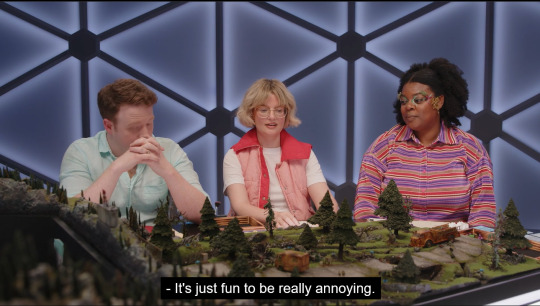
📚 STUFF I READ 📚
🙂 Under Alien Skies: A Sightseer's Guide to the Universe (Phil Plait, author & narrator) - The Bad Astronomer paints pictures of what the sky would look like standing on the surface of other planets, asteroids, etc.
😊 Initiation (Sex Wizards #1) (Alethea Faust) - erotic BDSM fantasy - actually a bit more plot & worldbuilding than I was expecting tbh, entertaining
😞 Miss Aldridge Regrets (Canary Club Mystery #1) (Louise Hare, author; Georgina Campbell, narrator) - This isn't a mystery the MC investigates, it's a mystery that happens TO her. She was tediously passive, seeming really rather naïve & foolish (esp given her age and life experience) and entirely in denial about pretty much everything that happens to her (since she's being actively framed for murder). However, the very short interval chapters from the killer's perspective did hook my interest and left me genuinely curious about the mystery. At about 44% I jumped to the end to see how the mystery resolved. I'm counting it as read since I did read over 50% of it.
😍 A Most Agreeable Murder (Julia Seales, author; Fiona Hampton, narrator) - comical pastiche/parody mashup of: Jane Austen (specifically), regency-set/gothic novels (in general) & Agatha Christie/country house mysteries - funny & entertaining, deftly done. Very Nightmare Abbey vibes in the absolute best way. I enjoyed all the caricature characters but 'overlooked tedious (but secretly a [redacted]) sister' Mary was my fave, absolute gothic queen
💖💖 +94K of shorter fic so shout out to these I really loved 💖💖
I'm dating the least inquisitive man in Ottawa (GlitterCity) - Rachel Reid's Game Changers: Troy Barrett/Harris Drover (but really mostly gen), 4K - cute, really nailed the character voices
Tinder Is the Night (rohkeutta) - MCU: stucky, 6K - hilarious, forever fave [reread]
Stay (fandomfluffandfuck) - MCU: stucky, 31K - silver fox/old guard Dom Steve subbing for newbie Dom Bucky - great character voices, hot af sex!
bitten hand guides best (frankoceansmoonriver) - The Witcher: Geraskier, 33K - lovely little fic with werewolf!Jaskier & witcher Geralt
📺 STUFF I WATCHED 📺
Make Some Noise - s2, e1
Dirty Laundry - s3, e2
Only Murders In The Building - s3, e10
Deadloch - s1, e1-8
Our Flag Means Death - s2, e1-3
D20: Burrow's End - "The Red Warren" (s20, e1)
D20: Adventuring Party - "Stoatal Recall" (s15, e1)
🎧 PODCASTS 🎧
Re: Dracula - October 1: Not My Own Master In The Matter
Welcome to Night Vale #235 - Book Club
What Next: TBD - Inside Crypto's House of Cards
Re: Dracula - October 2: Play for the Stake of Human Souls
⭐ The Atlas Obscura Podcast - Searching for Squids with Dr. Sarah McAnulty
Ed Zitron's 15 Minutes In Hell - Episode 9 - David Roth
Re: Dracula - October 3: The Holiest Love
Into It - Tech Bros Laid the Foundation, but Women Built Social Media
The Atlas Obscura Podcast - Enchanted Woods
Switched on Pop - In Defense of Crunk
Re: Dracula - October 4: It Is Like Death
Vibe Check - Freedom, Cut Me Loose!
The Atlas Obscura Podcast - Baobab Fare
⭐ Shedunnit - Agatha and Plum
Twenty Thousand Hertz+ - Wilhelm Scream Remix
⭐ Song Exploder - Alvvays "Archie, Marry Me"
Re: Dracula - October 5: Baptism of Blood
Today, Explained - Caste away
Re: Dracula - October 6: My Affairs of Earth
Dear Prudence - My Girlfriend Is Always Late! Help!
Endless Thread - Find A Grave: Social Media Icon
Into It - Are Bed Bugs and Katy Perry Out for Blood?
Today, Explained - Who shot ya, Tupac?
Switched on Pop - Metro Boomin Wants Some More
ICYMI - Stop Snitching on Main
⭐ One Year - 1955: The Hiroshima Maidens
🎶 MUSIC 🎶
Troubadours From the Tribe
Alternative Radio • 2000s
Foundations of Metal
Rob Zombie Radio • 2000s • Familiar
Metal Radio • 1980s
Manowar Radio
"Give It Away" [RHCP] Radio • Familiar
Stand And Deliver: The Very Best of Adam & The Ants {1999}
#sunday reading recap#bookgeekgrrl's reading habits#bookgeekgrrl's soundtracks#a most agreeable murder#my new living room furniture finally arrived!#i am luxuriating in having a comfy place to sit again!#watching a lot of great TV!#deadloch#omitb#ofmd s2#dimension 20#burrow's end#heavy metal music#adam ant#adam & the ants#rhcp#one year podcast#shedunnit podcast#the atlas obscura podcast#song exploder#re: dracula#welcome to night vale#vibe check podcast#switched on pop podcast#twenty thousand hertz+ podcast#into it podcast#endless thread podcast#what next: tbd podcast#today explained podcast#dear prudence podcast
10 notes
·
View notes
Text
Traditional Water Drums

Water drums are a category of membranophone characterized by the filling of the drum chamber with some water to create a unique resonant sound. The presence of the water within gives the sound far greater carrying power than a dry drum possesses. At close range, the tone of the water drum is often a dull thud, but when properly tuned by an experienced drummer it has a resonance that can be heard for miles. No drum can be heard so far; it is on record that water drums have been heard eight to ten miles over a lake. This capacity to be heard distinctly at a distance, coupled with a peculiar tone quality, gives the water drum a very unique voice.
Water drums are used all over the world, including African music and American Indian music, and are made of various materials, with a membrane stretched over a hard body such as a metal, clay or wood. The Native American Church uses a black iron kettle with three tripod legs. The leather drum head is soaked in water before being stretched over the kettle. Clay pot drums were common among many eastern and southern tribes in the ancient days, those of the South using a semicircular-shaped bowl with legs. The pottery water drum of the Pueblo Indians is a vase-shaped pot with a flared out top. Pueblo water drums vary in size from small pots holding a gallon of water up to huge ones measuring thirty or more inches in diameter. These are filled about one-fourth full of water and the wet hide is tied over the top. When not in use the tanned drumhead and rawhide thong for tying it are kept inside the pot.
Wooden water drums are the traditional percussion instrument for the Native American Anishinaabe (Ojibwe), Ottawa, Potawatomi, Huron and Iroquois peoples. The Eastern Woodland tribes made far greater use of water drums than any other Native peoples, and attached a greater significance to them. To the Anishinaabe and their many neighboring tribes, the water drum is a true medicine drum of great power, the sacred drum of the Midewiwin or Grand Medicine Society, which is at the core of Anishinaabe religion. Water is synonymous with life, hence it adds great potency to the water drum. Its sacred sound is regarded as one of the most effective ways of establishing connections with the spirit realm, since it travels through space, permeates visual and physical barriers, and conveys information from the unseen world. It is widely used today in traditional Longhouse social dances and ceremonies.
Wooden water drums are made either by hollowing out a solid section of a small soft wood log, or assembled using cedar slats and banded much like an old keg. The drum is filled about one-fourth full of water and a wet leather hide is stretched over the top. For detailed instructions on crafting, tuning and playing water drums, download the free eBook, How to Make Drums, Tomtoms, and Rattles by Bernard S. Mason. This classic 1938 edition is now a free public domain eBook.
13 notes
·
View notes
Note
No worries if not but would you know of any resources for figuring out where a word comes from? I’ve been trying to figure out a weird name thing and every source I’ve found just describes Gahanna as “a Native American word for three creeks joining together” so I’m going kinda mad over here.
Yeah, so Gahanna is a place in Ohio, & their site says this as well, but they never state WHICH Native American language this allegedly derives from.
Looking at the Native-land site & google, they give us a few tribes that live in Franklin county, Ohio (which is where Gahanna is located) & wider Ohio as a State, which are:
Shawnee (which is the main tribe who's tradional territory is where Gehenna is now)
Delaware tribe (who arrived in Ohio later in the 1700s & were originally from the East Coast)
Ottawa
Miami
Wyandot
If I'm looking at the IPA tables of these languages right, then... Shawnee doesn't have a g sound (or a similar sound, the closest would maybe be k k:, which isn't really close at all) in their language, so it can't be Shawnee.
The word for "Three" in Lenape is "Naxa" & looking at one dictionary here, the word for "to joined together" is "Taquiechen", & the closest word I could find in the dictionary relating to "river" that sounds or is spelled the closest to Gahanna is "Mechhanneck", but it starts with an M & means "large Creek or River", not "three rivers joined together". Any words beginning with something similar to the English G & relating to a river are the words "Gamuck" ("on the side of the river") or "Kittam" (great river), so I'm not sure about those. So it might not be Lenape
Odawa/Ottawa is Nish, so I looked up the dictionary, and a translation of "where rivers meet" would be n'kwetgweyaa, (from itigwey+aa "to be a river" & nakwe "to meet") so?? Maybe???
Thus far looking in a Miami dictionary hasn't really turned up anything
I tried looking for some info with Wyandot, but so far have found nothing really, but the closest I think would be the word "Gahnawiyó'geh", but this means Oklahoma, not for anything in Ohio
So either their etymology is bullshit, there's some other info I'm missing, or this word is so badly bastardized that I can't find the proper origin
18 notes
·
View notes
Text
One word.
Wendigos.
Okay thank you for coming to my TED TALK
HAHAHAHAHHA YEAH RIGHT
I have more about wendigos because I have a problem. No yall dont get to know what the problem is. That’s a secret for the winner of the hunt
pleasesendhelpihaventsleptfor27hours
FIVE FUN FACTS ABOUT WENDIGOS WITH MESSENGER!
1) It has Native American origin. Specifically the Native American tribes that spoke Algonquin (A dialect of Ojibwa spoken by the Algonquins. Which, if you didn’t know, are the Indigenous people living in Canada along the Ottawa River and its tributaries and westward to the north of Lake Superior.) The other tribes that had the wendigo in their folklore are the Saulteaux, the Cree, the Ojibwe, the Naskapi, and the Innu (if I remember the last two right. Like I said, getting really sleep deprived and this is from memory. But I need to get it out of my brain and on here because I have the aforementioned problem.)
2) It has several names! They all are like some variation of Wendigo though. But the names are; Windigo, Witigo, Witiko, and Wee-Tee-Go. All of these roughly translate to “the evil spirit that devours mankind.”
3) As with most folklore, depending on the legend, the appearance of the Wendigo changes. But some describe the wendigo as an emaciated figure with ashen flesh. Others describe it as a giant creature up to 15 feet (4.5 metres) tall or as a beast that grows larger the more it eats. It may have sunken or glowing eyes and sharp yellowed fangs and claws. There are some that say it’s may appear as a monster with some human characteristics or as a spirit who has possessed a human being and made them monstrous.
3a) The Algonquian legend describes it as: “a giant with a heart of ice; sometimes, it is thought to be entirely made of ice. Its body is skeletal and deformed, with missing lips and toes.”
3b) The Ojibwa describe it as: “It was a large creature, as tall as a tree, with a lipless mouth and jagged teeth. Its breath was a strange hiss, its footprints full of blood, and it ate any man, woman, or child who ventured into its territory. And those were the lucky ones. Sometimes, the Wendigo chose to possess a person instead, and then the luckless individual became a Wendigo himself, hunting down those he had once loved and feasting upon their flesh.”
4) I know what you’re thinking. Wow Messenger! How does a wendigo possess a human? Going back to that whole “spirit that devours mankind” thing, keep that in your mind along with possession. Now, a wendigo is historically associated with cannibalism, murder, insatiable greed, and cultural taboos against such behaviors. Those kind of things might devour your humanity, and if you exhibit such behaviors, you must be possessed by a wendigo! Although they are called the Flesheaters of the Forest for a reason soooo.. devouring is in the literal sense as well.
5) A legit medical condition borrowed the name Wendigo! It’s called Wendigo psychosis. Some psychiatrists consider it a syndrome that creates an intense craving for human flesh and a fear of becoming a cannibal. Ironically, this psychosis occurs in people living around the Great Lakes of Canada and the United States. Wendigo psychosis usually develops in the winter in individuals isolated by heavy snow for long periods. The initial symptoms are poor appetite, nausea, and vomiting. Subsequently, the individual develops a delusion of being transformed into a Wendigo monster. People who have Wendigo psychosis increasingly see others around them as being edible. At the same time, they have an exaggerated fear of becoming cannibals.The most common response when a person showed signs of Wendigo psychosis was a curing attempt by traditional native healers. In past cases, if these attempts failed and the possessed person began to threaten those around them or to act violently or anti-socially, they were executed. There have been reports regarding this psychosis dating back hundreds of years (as far back as 1661).
#messy rambles#messenger of folklore#ig#wendigo#windigo#native american folklore#its actually hella fascinating#the original wendigo#the wendigo from video games and shit are fun too#but reading the actual legends#i figure out i liked it during halloween last year#have been hooked ever since#my friends are scared of windigos though#so i cant talk to them about it#which is kinda sad#but whatever#ill just post about it on tumblr#also if youre reading this#congrats#you won the hunt#so you got to know what the problem was
9 notes
·
View notes
Photo

On this day, August 20, 1794, an American Indian Alliance and the United States Army, led by General Anthony Wayne, came together at the Battle of Fallen Timbers near present-day Toledo, Ohio. The Battle of Timbers was the last major conflict of the Northwest Territory Indian War between American Indians and the United States. At the battle General Anthony Wayne (1745-96) led U.S. troops to victory over a confederation of Indian warriors whose leaders included Chief Blue Jacket of the Shawnees and Chief Little Turtle of the Miamis. The Treaty of Greenville, signed the following year, opened up much of present-day Ohio to settlers.
President George Washington appointed Major General Anthony Wayne as the commander of the United States Army in the Northwest Territory. Wayne was instructed to reorganize the mostly state-based militia force into a more professional army known as the Legion of the United States. Ostensibly the Legion’s mission was to pacify the American Indian tribes in the Northwest in order to bring to an end the widespread frontier violence and if possible produce a negotiated peace. Wayne’s predecessors, Josiah Harmar and Arthur St. Clair, both suffered significant defeats against American Indian tribes in the Ohio Country, and Washington hoped that Wayne’s aggressive tactics would prove to be more successful. In May 1793, Wayne arrived with additional troops to supplement the Army of the Northwest, and positioned his army at Fort Washington, near present-day Cincinnati. Wayne repeatedly drilled his troops, hoping to avoid the horrific defeats that befell Harmar and St. Clair.
Thirty-three of Wayne’s men were killed and roughly one hundred wounded, while the American Indian Alliance lost approximately twice that number. Blue Jacket's (Shawnee) followers retreated to Fort Miami, hoping the British would provide them with protection and assistance against Wayne's army, however the British refused to let them into the fort. Wayne followed the warriors to the fort. Upon his arrival, Wayne ordered the British to evacuate the Northwest Territory, but the British commander refused, and Wayne decided to withdraw to Fort Greene Ville.
For the next year, Wayne stayed at Fort Greene Ville working to negotiate a treaty with Tribal leaders. The Tribal negotiators and leaders realized they were at a serious disadvantage with the settlers, especially because of Britain's refusal to support them. On August 3, 1795, representatives from the Myaamia, Wyandotte, Shawnee, Lenape, Ottawa, Ojibwa, Potawatomi, Kickapoo, Kaskaskias, Eel River, and Weas signed the Treaty of Greeneville. In signing the treaty, these tribes agreed to move to the northwestern part of what is now the State of Ohio. Championed as a treaty of friendship between American settlers and American Indian tribes the treaty did not subdue tension between American Indians and settlers, and Tribal leaders continued to fight to regain their lost land. Bloodshed dominated the region for the next twenty years as settlers and American Indians struggled for control. In the early 19th century, thousands of American Indian peoples from the Ohio Country and the Great Lakes region joined Tecumseh and his brother Tenskwatawa at Prophetstown, Indiana, where they were building a new Indian Alliance as a united force to stop the sale of Indian land.
The Fallen Timbers Battlefield Memorial Park is a National Historic Landmark and one of the historic sites co-managed by the Ohio History Connection and local officials. Located near the Maumee River, the park includes monuments honoring the warriors and soldiers who perished during the battle - including Major General Anthony Wayne, his soldiers, the American Indian leaders, and many warriors.
24 notes
·
View notes
Text
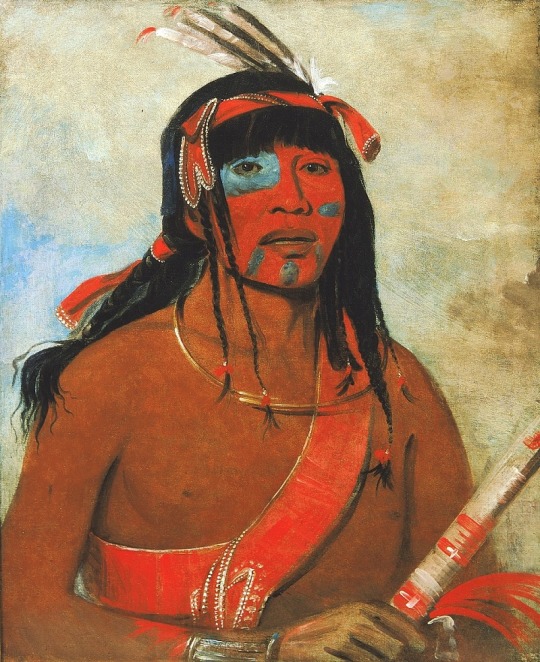
'O-tá-wah, The Ottaway, a Warrior'.
George Catlin, ????
Notes:
From the Ottawa tribe???
2 notes
·
View notes
Photo



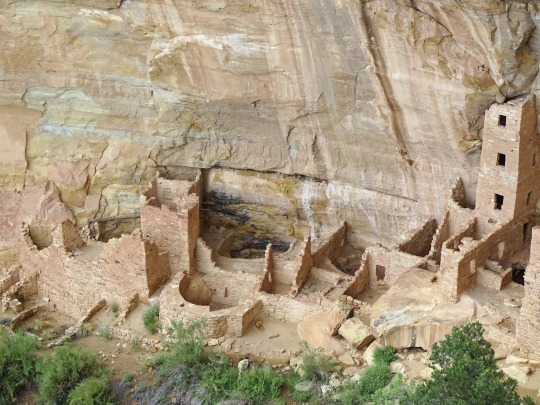



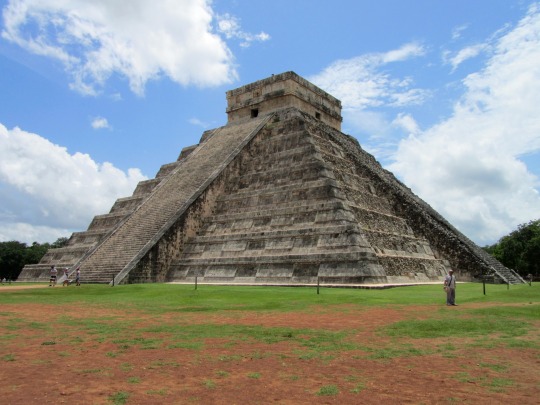


International Day of The World's Indigenous People
The International Day of the World’s Indigenous People on August 9 pays tribute to the indigenous communities of the world. The latest data reveals that there are about 370 to 500 million indigenous people living in 90 countries. These communities are noted to have their own unique set of languages, traditions, cultures, and governing systems. For many indigenous groups, the systems that their ancestors have followed for centuries have stood the test of time by serving them with positive outcomes to date. Many indigenous people’s special bond and connection with nature have also led to the protection of the general environment. However, on the other side, several indigenous communities face difficulties due to a central government’s covert and overt attempts to control their lives. This has led to indigenous people’s rights violations where they would have otherwise ensured peaceful and harmonious lives for them.
History of International Day of The World's Indigenous People
The first International Day of the World’s Indigenous People was officially celebrated in August 1995. The day had been brought into existence when the 49/214 resolution was passed by the U.N. General Assembly on December 23, 1994. August 9 was chosen as the commemorative date because that was when the first meeting of the U.N. Working Group on Indigenous Populations of the Sub-Commission on the Promotion and Protection of Human Rights was held. Every year, the day is honored by governments and organizations holding education forums and conferences to meet and discuss the social issues faced by indigenous groups worldwide. People are also given information on any ongoing and/or upcoming activities and projects that are being undertaken to help the target communities. Every year, the theme changes to shed light on a pressing topic, and the theme for the year 2021 was ‘Leaving no one behind: Indigenous peoples and the call for a new social contract.’
The social contract theme is a call for accountability in the general populations’ interaction with the indigenous communities and their resources. Over the years, many indigenous groups have found themselves to be on a disadvantageous terrain in the face of urban development projects that have destroyed and denigrated their lands and territories. The central governments and builders involved in such projects never sought permission from or even spoke with the indigenous communities before they took the developmental steps. Organizations and agencies like the U.N. and UNESCO have made efforts for constitutional/legislative reforms for dominant indigenous groups. Yet, the efforts must be focussed on bringing everyone together in the cause, leaving none behind.
International Day of The World's Indigenous People timeline
1982 First U.N. Meeting on Indigenous People
The U.N. holds the first meeting on indigenous people by forming the U.N. Working Group on Indigenous Populations of the Sub-Commission on the Promotion and Protection of Human Rights.
1995 International Day of the World’s Indigenous People
The first International Day of the World’s Indigenous People is celebrated by the U.N. General Assembly.
2005 - 2015 Indigenous People’s Decade
The U.N. proclaims 2005 to 2015 to be the ‘Decade of Action and Dignity’ for the indigenous communities.
2019 Indigenous Languages Year
After a startling 2016 report on the danger of more than 2,000 indigenous becoming extinct, the U.N. declares 2019 to be the International Year of Indigenous Languages in order to create awareness.
How To Observe International Day of the World’s Indigenous People
Learn about indigenous groups
Learn an indigenous language
Stand by indigenous groups
History related to indigenous people is always interesting to read and learn about. They have their own sets of beliefs, customs, languages, and cultures. Their daily lifestyles are also often connected with nature, be it animals, trees, certain plants, or lakes/rivers.
The U.N. declared the years 2022 to 2032 the decade for indigenous languages. The goal is to bring to attention the dying languages, since most of them are not taught in schools or are used by the general public. Losing a language is losing an important facet of the history and culture of a people.
The best way to celebrate this day and the rest of the year is by vowing to stand by indigenous groups. The indigenous people have the right to freely choose however they wish to live, much like any other living being on this planet. Protecting their rights also in turn protects your rights in the long run.
5 Interesting Facts About Indigenous People
80% of the world’s biodiversity
4,000 indigenous languages
High poverty rates
Short life spans
Leaders in protecting the environment
Around 80% of the world’s biodiversity is in places where indigenous groups are living.
The 5,000 indigenous communities in the world are credited with having about 4,000 languages.
While the indigenous communities account for only 5% of the world’s population, they make up 15% of the world population that is living in poverty.
Indigenous communities, due to a lack of awareness, have shorter life spans as they die of preventable diseases like malaria and H.I.V.
Studies have shown that the fauna and flora, and biodiversity thrive and flourish where indigenous people reside.
Why International Day of the World’s Indigenous People is Important
It’s a celebration of indigenous people
It’s a celebration of indigenous languages
It’s a celebration of the freedom to live
Indigenous people form an essential and crucial part of not only our planet’s history, but also how human beings have come to make systems to lead fruitful lives. The indigenous people’s cultures, customs, and traditions are interesting to learn about for their uniqueness and for what they teach us about the universe and the bigger picture.
Language, at its core, builds the identity of a people. The involvement of the different phonetics, grammar rules, and formal/informal styles can tell one a lot about where a community has come from, and how their history has shaped them. The same is the case with indigenous languages. The problem lies in their endangerment, and this is why we must strive to preserve them.
The freedom to practice our rights on a piece of land that has shaped our communities for centuries should not be taken away from anyone. The freedom to practice our customs, traditions, and general lifestyles is another important aspect of living a worthwhile life. For these very reasons and many others, we should join indigenous people in their right to live and flourish however they like.
Source
#Native American flute#Monument Valley Navajo Tribal Park#Arizona#USA#Dinosaur National Monument#Diné#Mesa Verde National Park#Colorado#Square Tower House#Jamestown S'Klallam Tribe#Wabanki Canoe#Mexico#Chichén Itzá#The Gather-Ring by Manuel Báez and Charlynne Lafontaine#Ottawa#Cliff Palace#original photography#tourist attraction#landscape#International Day of The World's Indigenous People#9 August#Canada#jingle dance#DayOfTheWorldsIndigenousPeople
5 notes
·
View notes
Text

The Heber Springs Water Panther is the Arkansan contribution to the Water Panther conversation. The Water Panther — known to the Ojibwe, Algonquin, Cree, Ottawa, Menominee, and Shawnee Tribes — is a malevolent spirit with the features of a big cat/dragon hybrid that drags people underwater to their deaths. The Heber Spring Water Panther is a particularly loud fella, offering “a cross between the cry of a panther and the scream of Satan himself.” There is a famous story about how construction workers were TERRORIZED by the wails of the Heber Springs Water Panther while INSTALLING AN ELEVATOR TO A CAVE FROM A SENATORS CLIFF-TOP HOME. That's protest art, baby.
3 notes
·
View notes
Photo
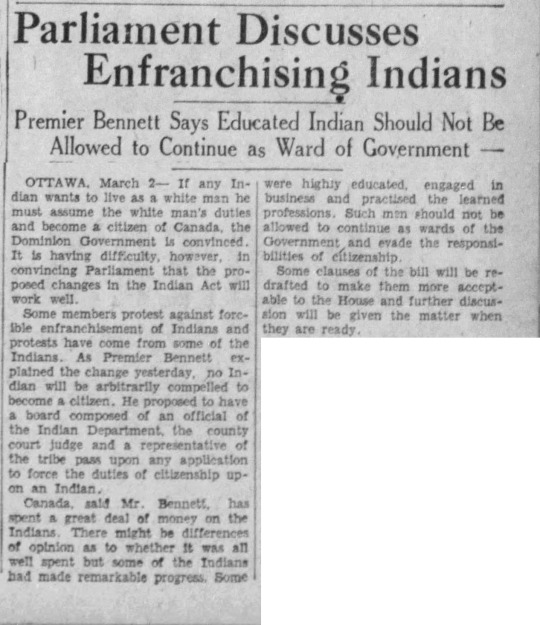
“Parliament Discusses Enfranchising Indians,” Kingston Whig-Standard. February 2, 1933. Page 1.
----
Premier Bennett Says Educated Indian Should Not Be Allowed to Continue as Ward of Government
---
OTTAWA, March 2 - If any Indian wants to live as a white man he must assume the white man's duties and become a citizen of Canada, the Dominion Government is convinced. It is having difficulty, however, in convincing Parliament that the proposed changes in the Indian Act will work well.
Some members protest against forcible enfranchisement of Indians and protests have come from some of the Indians. As Premier Bennets explained the change yesterday, no Indian will be arbitrarily compelled to become a citizen. He proposed to have a board composed of an official of the Indian Department, the county court judge and a representative of the tribe pass upon any application to force the duties of citizenship upon an Indian.
Canada, sald Mr. Bennett, has spent a great deal of money on the Indians. There might be differences of opinion as to whether it was all well spent but some of the Indians had made remarkable progress. Some were highly educated, engaged in business and practised the learned professions. Such men should not be allowed to continue as wards of the Government and evade the responsibilities of citizenship.
Some clauses of the bill will be redrafted to make them more acceptable to the House and further discussion will be given the matter when they are read.
[AL: Very crude settler colonialism in Canada, and I’d love to know who the members of parliament were that protested this change to the Indian Act and were worried about forcible attempts to enfranchise Indigenous people and thus remove their land rights. R. B. Bennett, a dick all around, uses a very similar argument for enfranchisement as he used for refusing welfare: we’ve spent money on you, time to stop suckling (our not very generous) teat.]
#parliament of canada#prime minister of canada#bennett government#indian act#settler colonialism in canada#settler colonialism#enfranchisement#anti-indigenous racism#indigenous rights#first nations#indigenous people#assimilationism#great depression in canada
1 note
·
View note
Photo

The French and Indian War (1754–1763) was a theater of the Seven Years' War, which pitted the North American colonies of the British Empire against those of the French, each side being supported by various Native American tribes. At the start of the war, the French colonies had a population of roughly 60,000 settlers, compared with 2 million in the British colonies.[4] The outnumbered French particularly depended on the natives.[5]
Two years into the French and Indian War, in 1756, Great Britain declared war on France, beginning the worldwide Seven Years' War. Many view the French and Indian War as being merely the American theater of this conflict; however, in the United States the French and Indian War is viewed as a singular conflict which was not associated with any European war.[6] French Canadians call it the guerre de la Conquête ('War of the Conquest').[7][8]
The British colonists were supported at various times by the Iroquois, Catawba, and Cherokee tribes, and the French colonists were supported by Wabanaki Confederacy member tribes Abenaki and Mi'kmaq, and the Algonquin, Lenape, Ojibwa, Ottawa, Shawnee, and Wyandot (Huron) tribes.[9] Fighting took place primarily along the frontiers between New France and the British colonies, from the Province of Virginia in the south to Newfoundland in the north. It began with a dispute over control of the confluence of the Allegheny River and Monongahela River called the Forks of the Ohio, and the site of the French Fort Duquesne at the location that later became Pittsburgh, Pennsylvania. The dispute erupted into violence in the Battle of Jumonville Glen in May 1754, during which Virginia militiamen under the command of 22-year-old George Washington ambushed a French patrol.[10]
In 1755, six colonial governors met with General Edward Braddock, the newly arrived British Army commander, and planned a four-way attack on the French. None succeeded, and the main effort by Braddock proved a disaster; he lost the Battle of the Monongahela on July 9, 1755, and died a few days later. British operations failed in the frontier areas of the Province of Pennsylvania and the Province of New York during 1755–57 due to a combination of poor management, internal divisions, effective Canadian scouts, French regular forces, and Native warrior allies. In 1755, the British captured Fort Beauséjour on the border separating Nova Scotia from Acadia, and they ordered the expulsion of the Acadians (1755–64) soon afterwards. Orders for the deportation were given by Commander-in-Chief William Shirley without direction from Great Britain. The Acadians were expelled, both those captured in arms and those who had sworn the loyalty oath to the King. Natives likewise were driven off the land to make way for settlers from New England.[11]
The British colonial government fell in the region of Nova Scotia after several disastrous campaigns in 1757, including a failed expedition against Louisbourg and the Siege of Fort William Henry; this last was followed by the Natives torturing and massacring their colonial victims. William Pitt came to power and significantly increased British military resources in the colonies at a time when France was unwilling to risk large convoys to aid the limited forces that they had in New France, preferring to concentrate their forces against Prussia and its allies who were now engaged in the Seven Years' War in Europe. The conflict in Ohio ended in 1758 with the British–American victory in the Ohio Country. Between 1758 and 1760, the British military launched a campaign to capture French Canada. They succeeded in capturing territory in surrounding colonies and ultimately the city of Quebec (1759). The following year the British were victorious in the Montreal Campaign in which the French ceded Canada in accordance with the Treaty of Paris (1763).
France also ceded its territory east of the Mississippi to Great Britain, as well as French Louisiana west of the Mississippi River to its ally Spain in compensation for Spain's loss to Britain of Spanish Florida. (Spain had ceded Florida to Britain in exchange for the return of Havana, Cuba.) France's colonial presence north of the Caribbean was reduced to the islands of Saint Pierre and Miquelon, confirming Great Britain's position as the dominant colonial power in northern America.
https://en.wikipedia.org/wiki/French_and_Indian_War
3 notes
·
View notes
Text
Wednesday 17th April 2024, Ottawa, 11.54am.
#168,509 — A man wakes up one morning and he is out of focus. The tribe had been thought to have become extinct in the 1920s.
0 notes